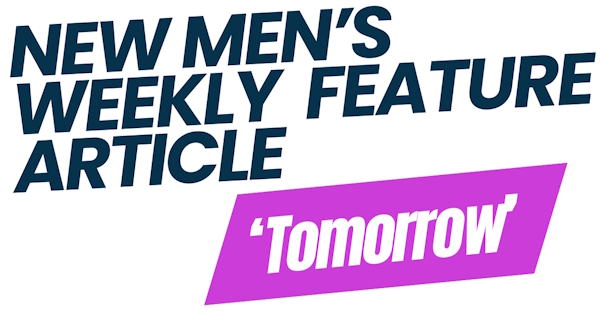Unlocking Employee Potential: The Role Of Recognition And Rewards In The Workplace

In today’s competitive business environment, organizations are constantly seeking ways to enhance employee engagement, productivity, and satisfaction. One of the most effective strategies to achieve these goals is through recognition and rewards.
Recognition and rewards are more than just perks or bonuses; they are essential components of a well-rounded employee engagement strategy. When workers feel valued and respected, they are much more motivated and dedicated to their jobs. In turn, this makes people more productive, creative, and happy with their jobs.
The Psychology Behind Recognition
Human beings have an intrinsic need for acknowledgment and appreciation. According to Maslow's Hierarchy of Needs, esteem needs—such as respect, recognition, and self-esteem—are crucial for personal fulfillment. When employees receive recognition for their efforts, it satisfies these esteem needs and fosters a sense of accomplishment and belonging.
There are many ways to show appreciation, such as through public acknowledgments, writing compliments, or spoken praise. It doesn't matter what style is used; what matters is that recognition is real and clear. For example, a boss who openly praises an employee for coming up with a creative solution to a problem not only boosts that employee's morale but also sets a good example for the whole team.
The Role of Rewards in Motivation
Rewards, on the other hand, are tangible or monetary incentives given to employees for achieving certain goals or demonstrating exceptional performance. These can range from bonuses and raises to gift cards and extra time off. While recognition addresses the emotional and psychological aspects of motivation, rewards provide a concrete acknowledgment of an employee’s contributions.
Effective reward programs are designed to align with the goals and values of the organization. They should be perceived as fair and attainable, ensuring that employees feel motivated to strive for them. For example, a company that offers performance-based bonuses will encourage employees to exceed their targets, ultimately driving business growth.
Implementing a Successful Recognition and Reward Program
To maximize the benefits of recognition and rewards, organizations need to implement well-structured programs that align with their business objectives and culture. Here are some key steps to consider:
- Define Clear Objectives and Metrics
Before launching a recognition and reward program, it’s essential to define its objectives. What are the specific goals you want to achieve? These could include increasing employee engagement, reducing turnover, or enhancing teamwork. Once the objectives are clear, establish measurable metrics to evaluate the program’s effectiveness.
For instance, if the goal is to improve employee engagement, you might measure the program’s impact through employee surveys, engagement scores, or retention rates. Regularly assessing these metrics will help you determine whether the program is meeting its objectives and identify areas for improvement.
- Create a Culture of Recognition
A successful recognition program should be embedded into the organization’s culture. This means that recognition should not be limited to formal events or annual awards but should be an integral part of daily interactions. Encourage managers and leaders to regularly acknowledge employees’ efforts and achievements.
One effective way to foster a culture of recognition is by implementing peer-to-peer recognition systems. A more welcoming and cooperative workplace can be made by letting employees recognize and award their coworkers. Platforms like https://www.power2motivate.com.au/ provide tools for facilitating peer-to-peer recognition, making it easier for employees to appreciate each other’s contributions.
- Personalize Recognition and Rewards
Not all employees are motivated by the same rewards. Some may value monetary incentives, while others might prefer public recognition or additional time off. To maximize the impact of your recognition and reward program, it’s important to personalize the rewards based on individual preferences and motivations.
Conduct surveys or hold discussions to understand what types of recognition and rewards resonate with your employees. This information can help you tailor the program to better meet their needs and preferences. For example, a team member who values professional development might appreciate a reward in the form of a training opportunity or conference attendance.
- Ensure Timeliness and Consistency
For awards and recognition to work, they should be given at the right time and every time. Recognizing workers' successes soon after they happen encourages them to keep up the good work and keeps them motivated. On the other hand, late or inconsistent praise can lessen its effect and make people feel like they were treated unfairly.
Establish a system for tracking and managing recognition and rewards to ensure that they are given in a timely manner. This could involve setting up reminders for managers or using software tools to streamline the process.
- Communicate the Program Clearly
For a recognition and reward program to be successful, employees must be aware of its existence and understand how it works. Clearly communicate the program’s objectives, criteria, and processes to all employees. Provide training or resources to help managers effectively use the program and encourage participation.
Regularly update employees on the program’s progress and share success stories to maintain enthusiasm and engagement. Being open about how rewards and recognition are given builds trust and makes sure that workers think the program is fair and works.
The Benefits of Effective Recognition and Reward Programs
- Increased Employee Engagement
People are more likely to be interested in their jobs if they feel valued and paid for them. Engaged employees care more about their jobs, work faster, and are more likely to help the company succeed. A motivated worker is more likely to be pleased with their job and less likely to quit.
- Improved Performance and Productivity
Recognition and rewards can drive performance by motivating employees to exceed their goals and take on additional responsibilities. If you set up your rewards program correctly, it can motivate workers to do more and be more productive, which is good for the company's bottom line.
- Enhanced Employee Retention
Many businesses care a lot about keeping their workers, and rewards and recognition are big parts of keeping them happy and loyal. When employees feel like they are valued, they are more likely to stay with the company. This lowers the turnover rate and the costs of hiring and teaching new employees.
- Strengthened Team Cohesion
Recognition systems that let people recognize each other can help teams work together better. Employees who recognize and value each other's efforts make the workplace a better place to be and strengthen relationships within the team.
- Positive Organizational Culture
A good work culture where people feel respected and valued is supported by a culture of rewards and recognition. In turn, this boosts employee morale and makes the workplace a better place to work where people can help each other and do their best.
Conclusion
Unlocking employee potential through recognition and rewards is a powerful strategy for enhancing workplace motivation and engagement. By understanding the psychological impact of recognition, implementing effective programs, and personalizing rewards, organizations can foster a motivated and high-performing workforce. For businesses looking to build a culture of appreciation and drive employee success, investing in well-structured recognition and reward programs is a step in the right direction.









